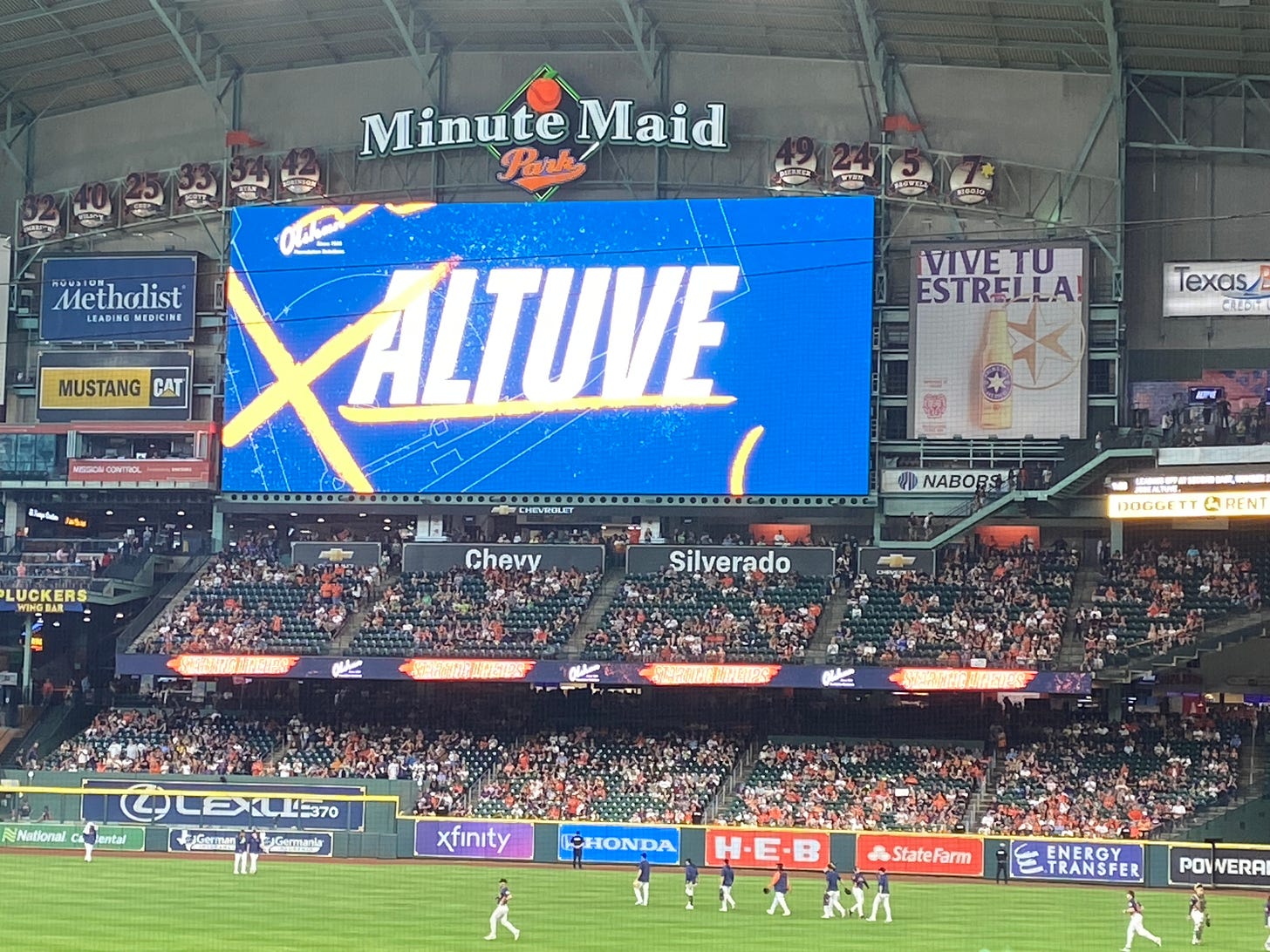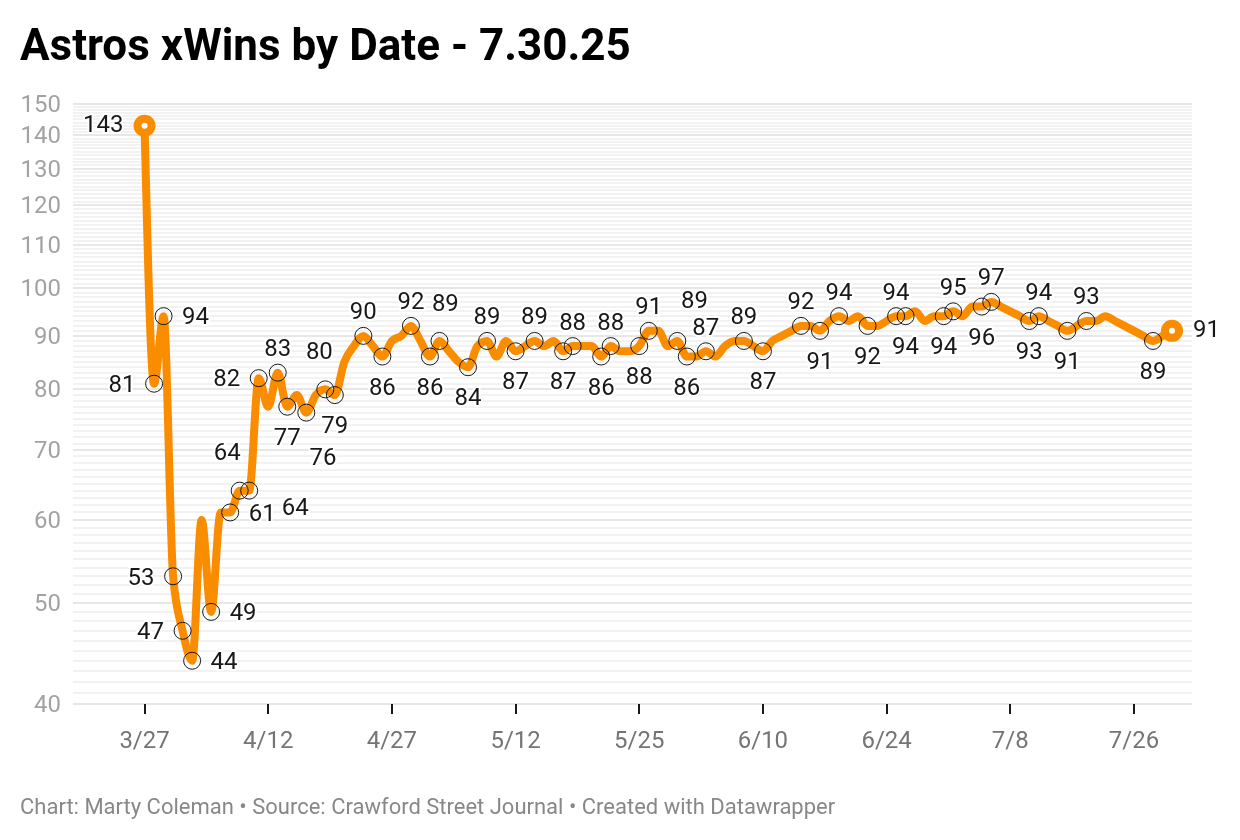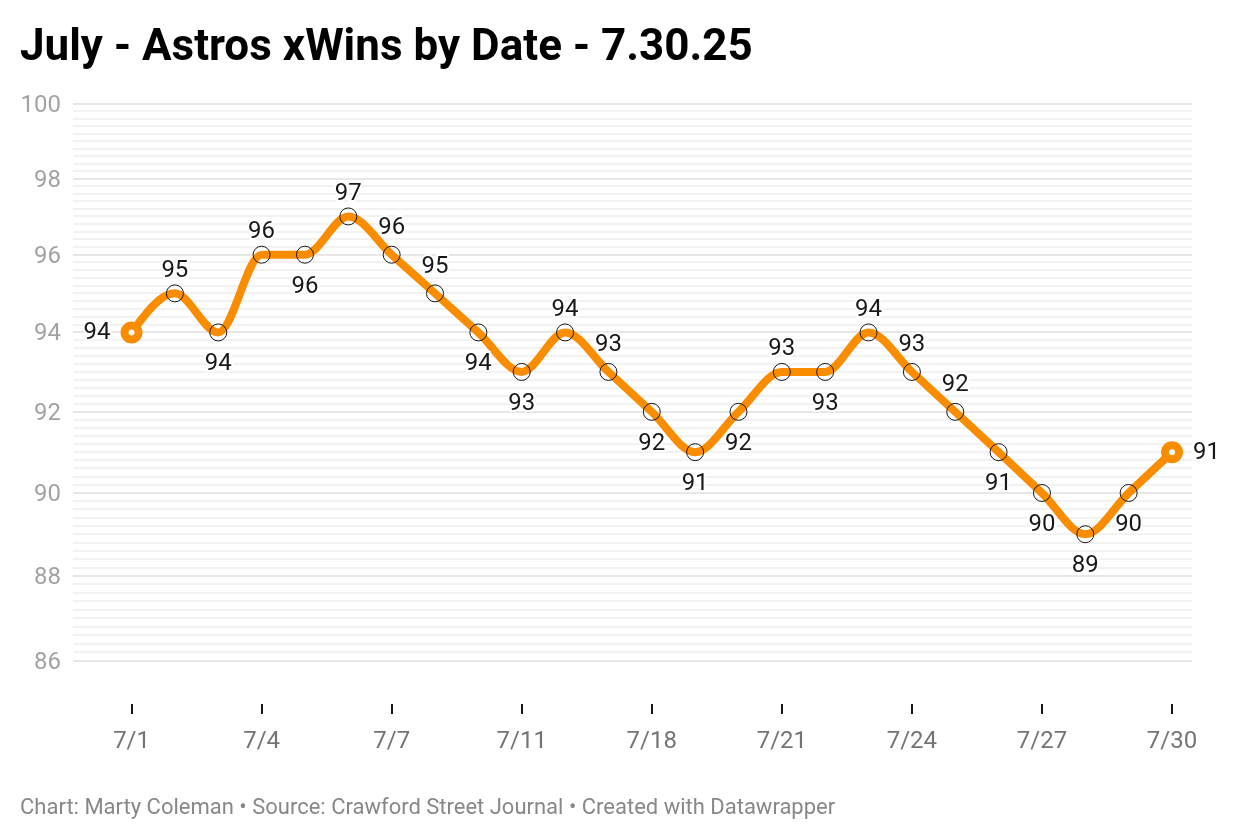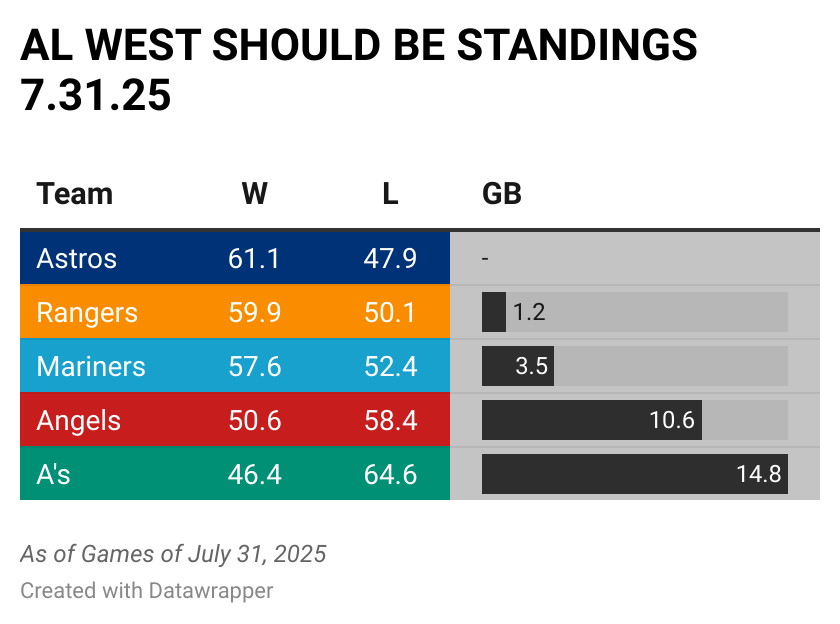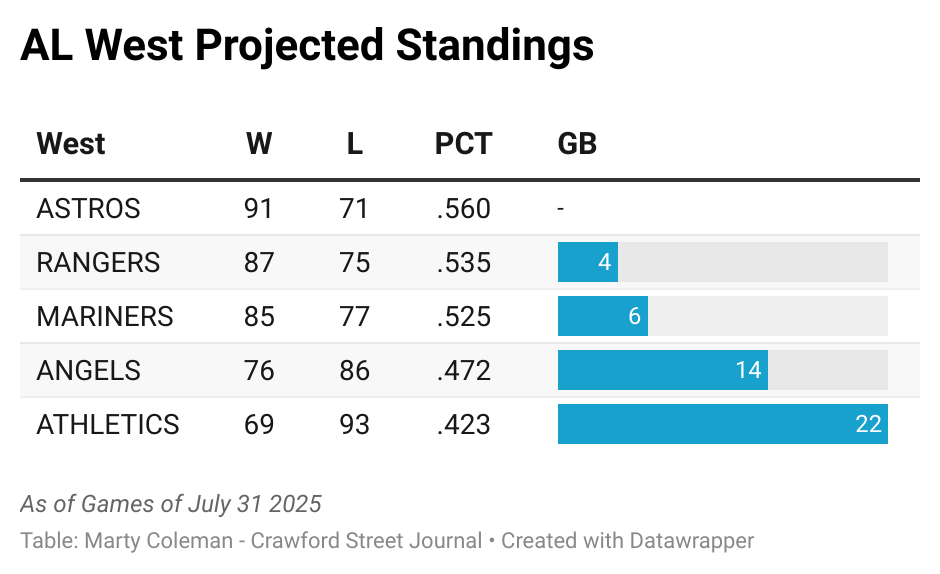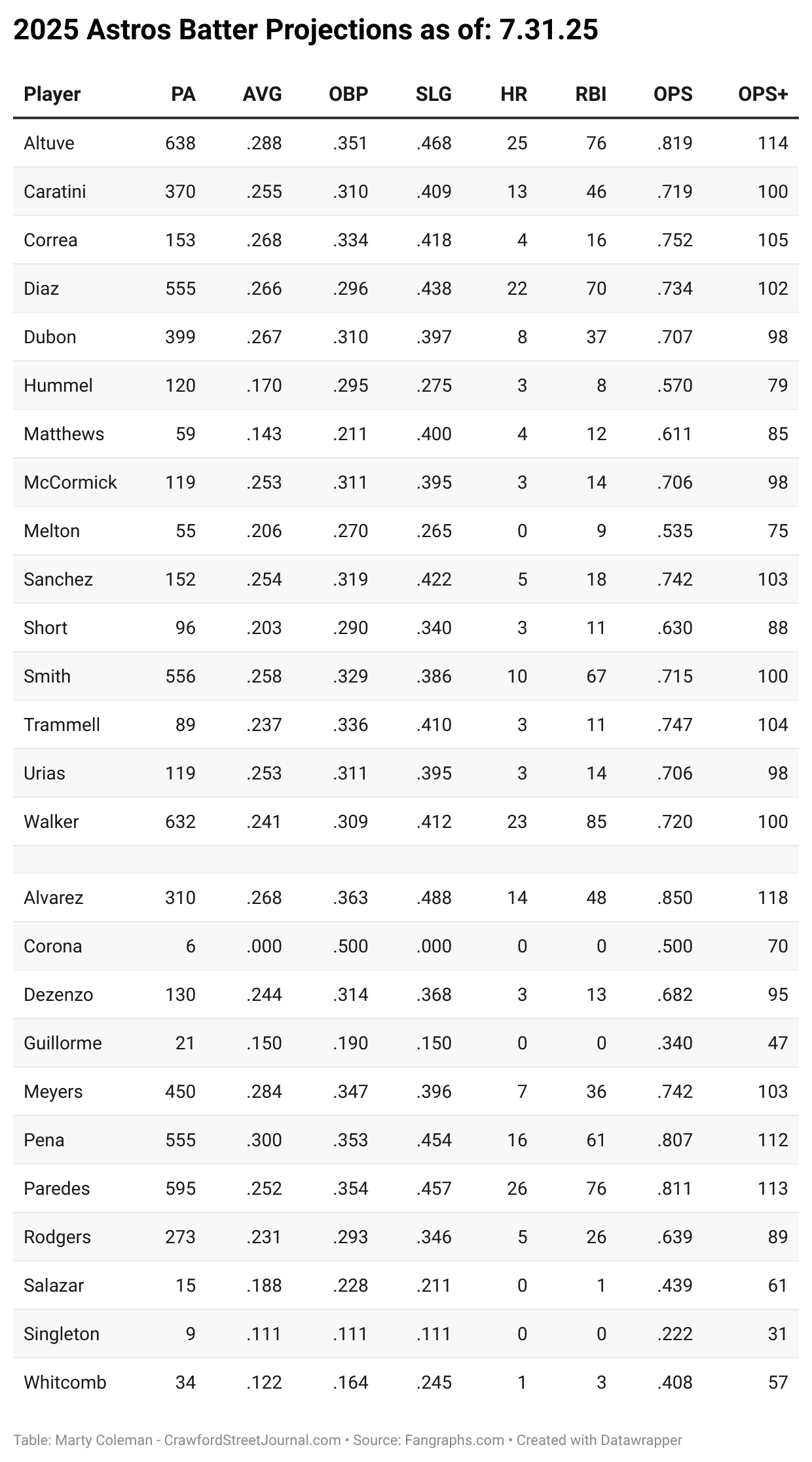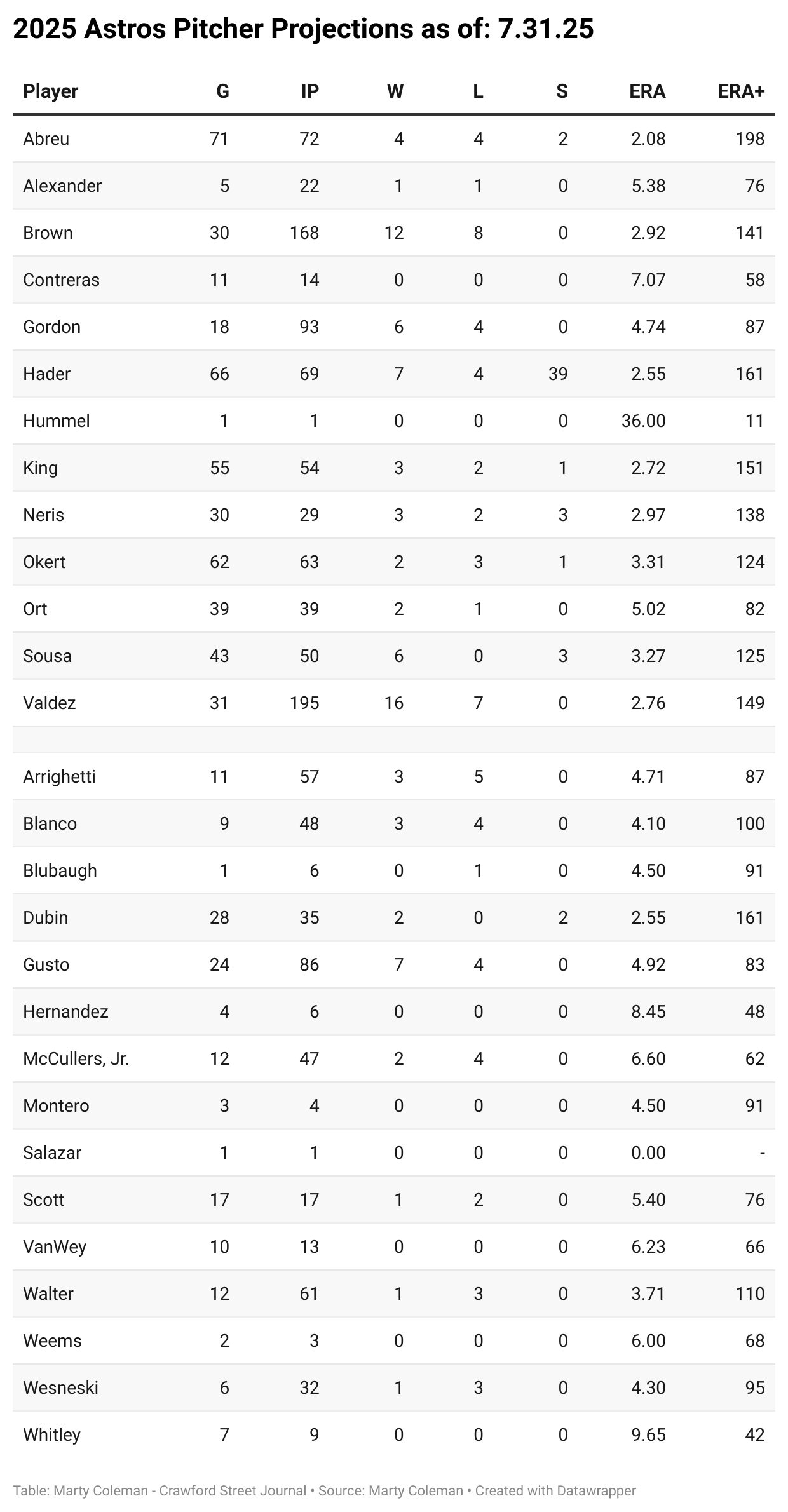Wheelin' and Dealin'
Correa returns, Astros add pieces to shore up lineup
The Astros saved some face and perhaps their season (some hyperbole) by winning the final two games against the Nationals while the Mariners continued to FAFO before besting the Rangers last night.
Deadline Maneuvers
Seattle’s recently added, shiny new pieces (Josh Naylor and Eugenio Suarez) may help the Mariners win the AL West title, but they are rapidly depleting their farm system and remain 4.5 games out with 52 (Mariners) and 53 (Astros) games to play.
Overall, I think it was Masterclass by Dana Brown. Houston received 3 MLB players that will improve the Astros immediately and gave up one MLB player and three lower-level MiLB players.
No, Brown didn’t get everything the Astros wanted or needed, but considering the totality of the situation and what he had to work with, he improved his team and gave up Gusto.
Palmer, Mikulski and Valencia could turn into MLB players at some point, as Yainer did when he was traded to the Astros when at the A+ level, but the chances of that happening are low and, in any case, none were going to help Houston in the foreseeable future.
As for Gusto, the Astros went 7-7 in his starts and at times he was serviceable, but his time in the rotation may have been nearing an end as vets return from the IL.
I like Gusto, but mainly as a lower-leverage bullpen piece, which makes him less valuable and if you have a chance to add a left-handed bat in 2025, you do it.
Let’s be honest, the Mariners added not only bigger names in Naylor and Suarez, but significant fWAR (4.7 between the two).
That said, the three additions for the Astros offset that (3.1 fWAR combined) a bit, as does the 4.5 game lead.
Outside of numbers, the Astros won the vibes battle with the return of Correa.
There is a buzz that wasn’t around the team before 4 p.m. CST yesterday.
There’s no way to quantify it or bake it into the expected wins, or know how long it’ll last, but know it’s there.
Expected Wins, Should Be Standings and Projected Standings
Houston is back to the 90+ win projection, but lost 3 games during July.
The Astros have regained the top spot in the AL West Should Be Standings.
If the wins and losses and run differential continue at the current rate, we would expect the final AL West Standings to look like this:
Batter and Pitcher Season Projections
I’ve added Correa, Sanchez and Urias to the mix.
Note that the numbers below are projections for their time in Houston only, not the full season.
Also note that at press time, corresponding roster moves have not been announced.
The OPS+ projections may not seem that high, but remember who they are replacing.
Likewise, no roster move announced to replace Gusto.
wOBA and wOBA+
Perhaps a decade late on this, but I’ve neglected wOBA for far too long and have recently done some work in the background and really like the metric.
Why? One example is how well it correlates to runs scored, which makes complete sense when you think about it.
Back of the envelope tells me that so far for 2025 wOBA has a .90 correlation to runs scored, while batting average correlates at .70 to runs scored.
You can debate whether both of those are high correlations or not, but one is much higher than the other.
The traditional OBP stat counts every hit (and walk) the same, while wOBA weights doubles, triples and homers heavier (that’s where the “w” (weighted) comes from in the name.
Simply put, a single, double and home run will score more runs on average than three singles, even though in both instances you’re on base three times.
Here’s the details.
Also, look at the top of the wOBA rankings for the league and you will find the best: Judge (by far), Will Smith, Shohei, Schwarber, Raleigh.
There are no slouches.
But there is also no wOBA+. Or at least there wasn’t until now.
With league wOBA currently at .314, it’s easy to say someone is above or below league average at a glance.
But what does it mean if a player has a wOBA of .376, for example? Above average, but how much?
Well, with wOBA+, it’s easy to see Jeremy Pena is 19% above league average wOBA.
Interestingly, these are in the exact same order as wRC+. The numbers are different, but the order is exactly the same.
Hunter Brown’s Velo by Month
Brown had one start in March and 5 every other month.
After a dip in May, Brown reached his season average (96.9 MPH) in July.
More on Brown’s 4-seamer in the Rando Stats below.
Quality Starts
The Astros have the third most quality starts in baseball at 50 (Philadelphia 56, Tampa 51)and have a 38-12 record when getting a quality start.
For the season, teams getting a quality start have won 67.9% of the time and in July teams getting a quality start won over 75% of the time.
It should be noted that when a team gets a quality start and the opposing team doesn’t, the win percentage for the team getting the quality start jumps to 76.2% for 2025.
It’s not the be-all and end-all, but it is a huge factor in winning, especially for a team like Houston, which is built on pitching and defense.
When the Astros don’t get a quality start they are 24-35 (.407).
Rando Stats of the Day
Jose Altuve slashed .363/.429/.626 with 13 extra-base hits, 5 HR, 21 RBI, 11 walks, 20 runs scored and 2 sacrifice flies, with a .442 wOBA (139 wOBA+!), 188 wRC+ and 1.2 fWAR in July.
Christian Walker slashed .318/.367/.466 in July.
For the season, Josh Hader has 26 shutdowns and 2 meltdowns.
Framber Valdez is 3rd in MLB in ground ball% among starters with at least 50 IP (60.3%).
Opponents are batting just .152 on Hunter Brown’s 4-seam fastball which he has thrown 39.6% of the time (up from 34.8% in 2024), averaging 96.9 MPH, up from 96.0 last season.
Brandon Walter and Colton Gordon both have 108 Location+ ratings, meaning the location of their pitches is 8% above league average.
As always, thanks for reading!


